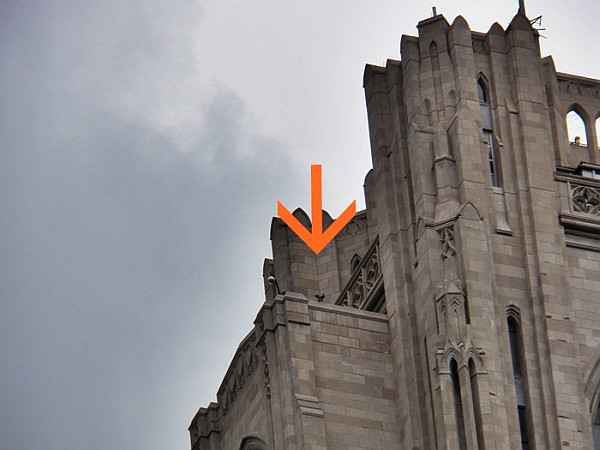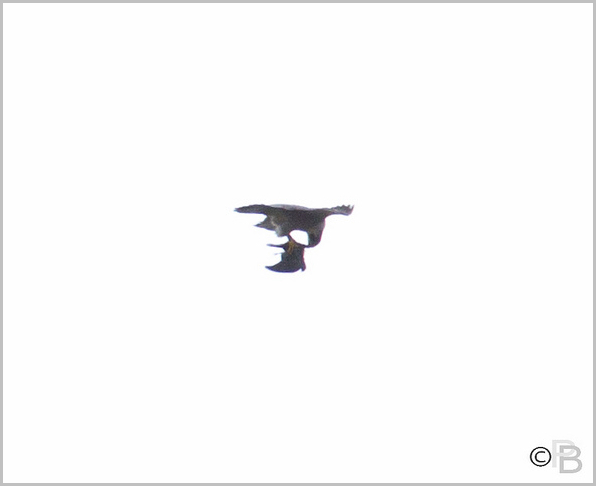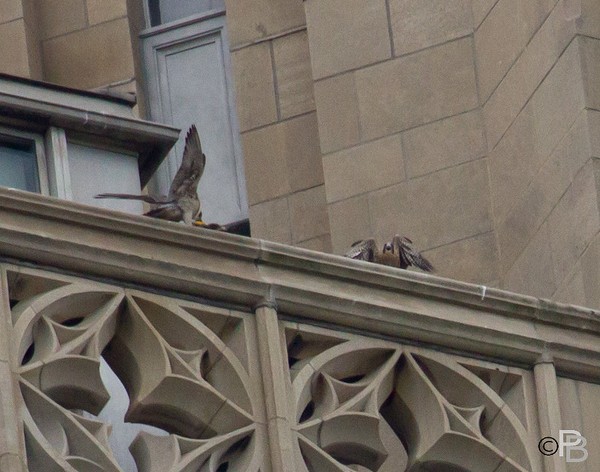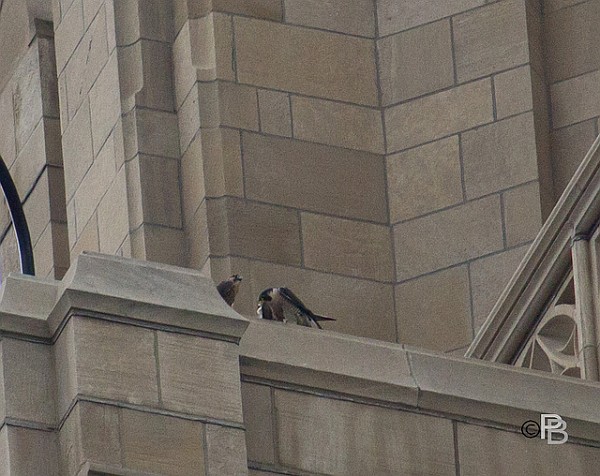
Over the years I’ve watched peregrine parents use food to encourage their chicks to fly. Those who haven’t flown yet don’t get much to eat. Those who have flown get a big reward.
Yesterday at Fledge Watch Dorothy showed how this is done.
By 1:00pm two chicks had fledged, one chick had not. The fledgling on the 38th floor ledge (see arrow) needed a reward so Dorothy flew out, caught a meal, and made a big show of plucking it in mid-air for her “kids” to see.

The chick on the railing flapped his wings to get Dorothy’s attention. He thought it worked. She brought the prey to him at the nestrail.

But this chick wasn’t hungry enough and his newly fledged brother needed a reward. Dorothy picked up the prey and delivered it to Yellow on 38. Sharon Leadbitter recorded it on video here.

Yesterday’s Lesson For Young Peregrines: You Get Food If You Fly.
(arrow-photo and video by Sharon Leadbitter, all other photos by Peter Bell)
p.s. Here are a few of the many people who’ve come to Fledge Watch this week. Peter Bell (far left with camera), John English, Anne-Marie Bosnyak, Rob Protz, and Sharon Leadbitter (far right, capturing that video). Come join us at the Schenley Plaza tent. Click here for the schedule or follow @KStJBirdlog on Twitter or Kate StJohn on Facebook for Fledge Watch updates.

(photo by Kate St. John)
I found all 3 chicks at 8:12am: Fledgling on 38-west ledge, fledgling on 17-south ledge, unfledged chick on nestrail ledge.
Just watched Sharon’s video of the feeding on 38 yesterday.
This link on youtube caught my eye: PEFA kills White-faced Ibis in Mass.
http://www.youtube.com/watch?v=eyqijh2sMao
Rob
That video is famous for the irony of it all. The white-faced ibis is rare in Massachusetts (it’s a western bird) and the peregrine that killed it had an injured eye. Both birds were at a disadvantage. …And then a bunch of people came to see the ibis and ended up seeing “Nature, red in tooth and claw.”
What are the other band colors? You mentioned Yellow, what are the other two?
The three chicks have colored tape on their silver USFW bands on their right legs. The colors are: Blue, Red and Yellow. This is temporary — only useful while the young peregrine is near its birthplace.